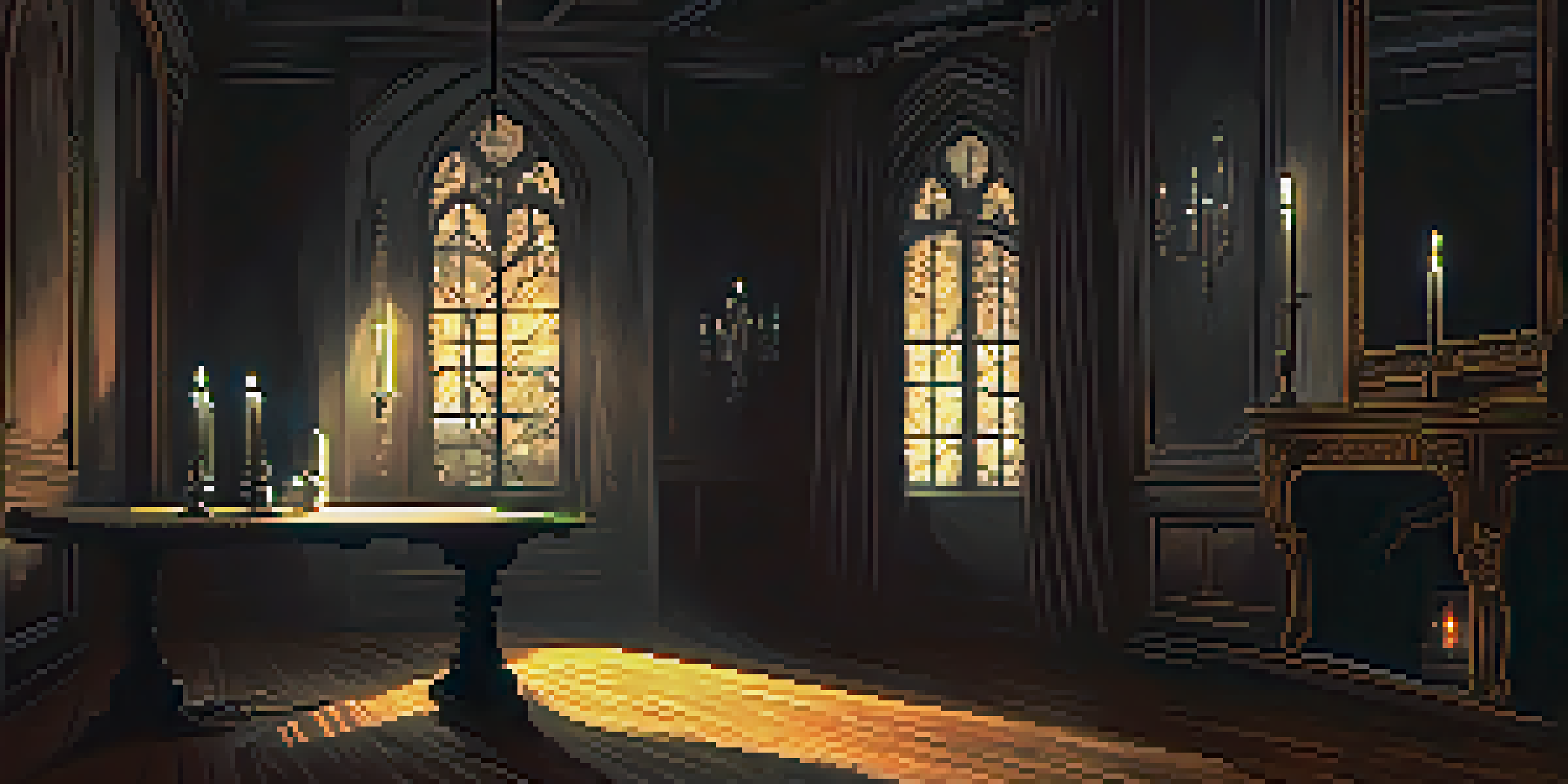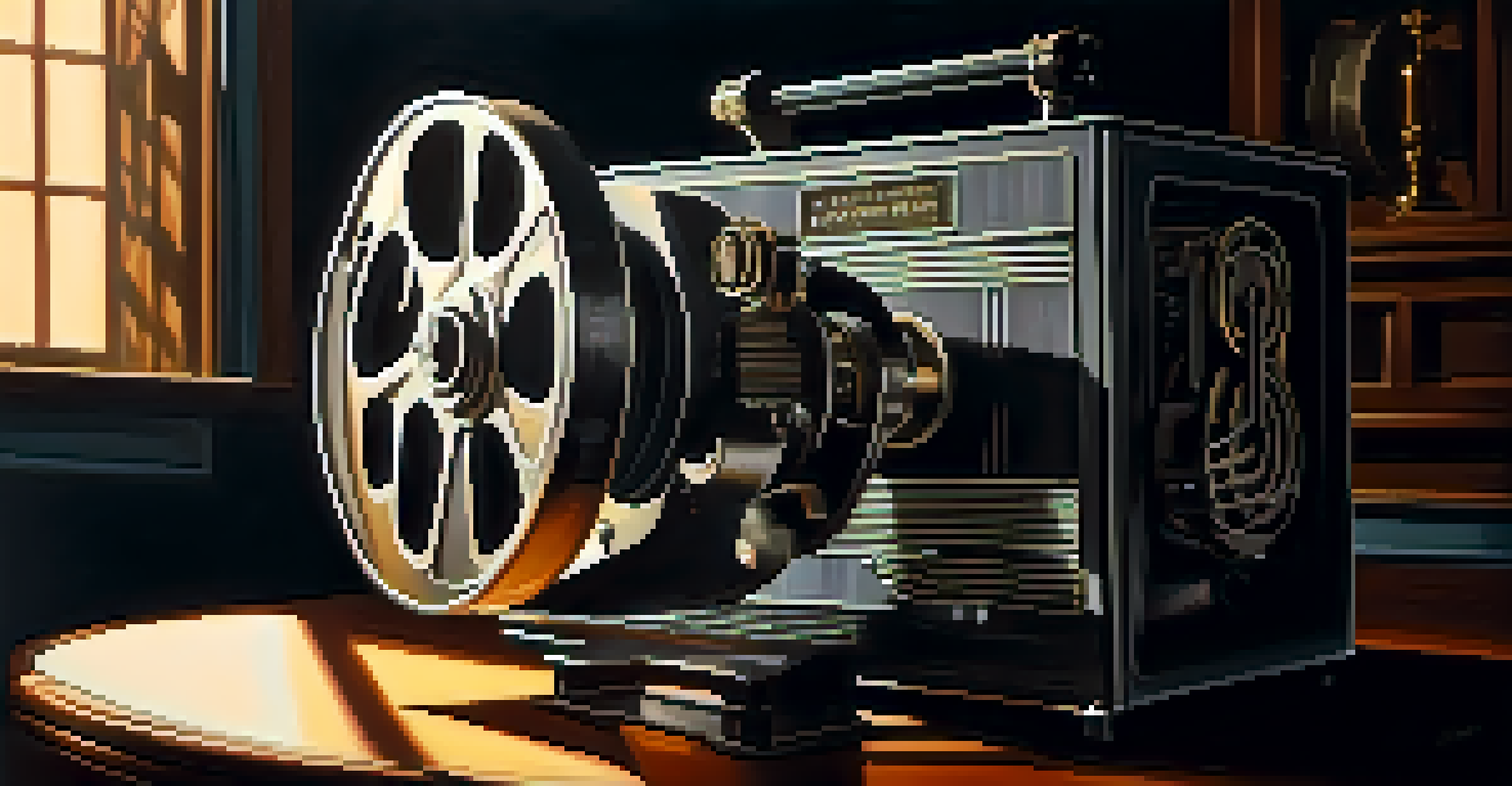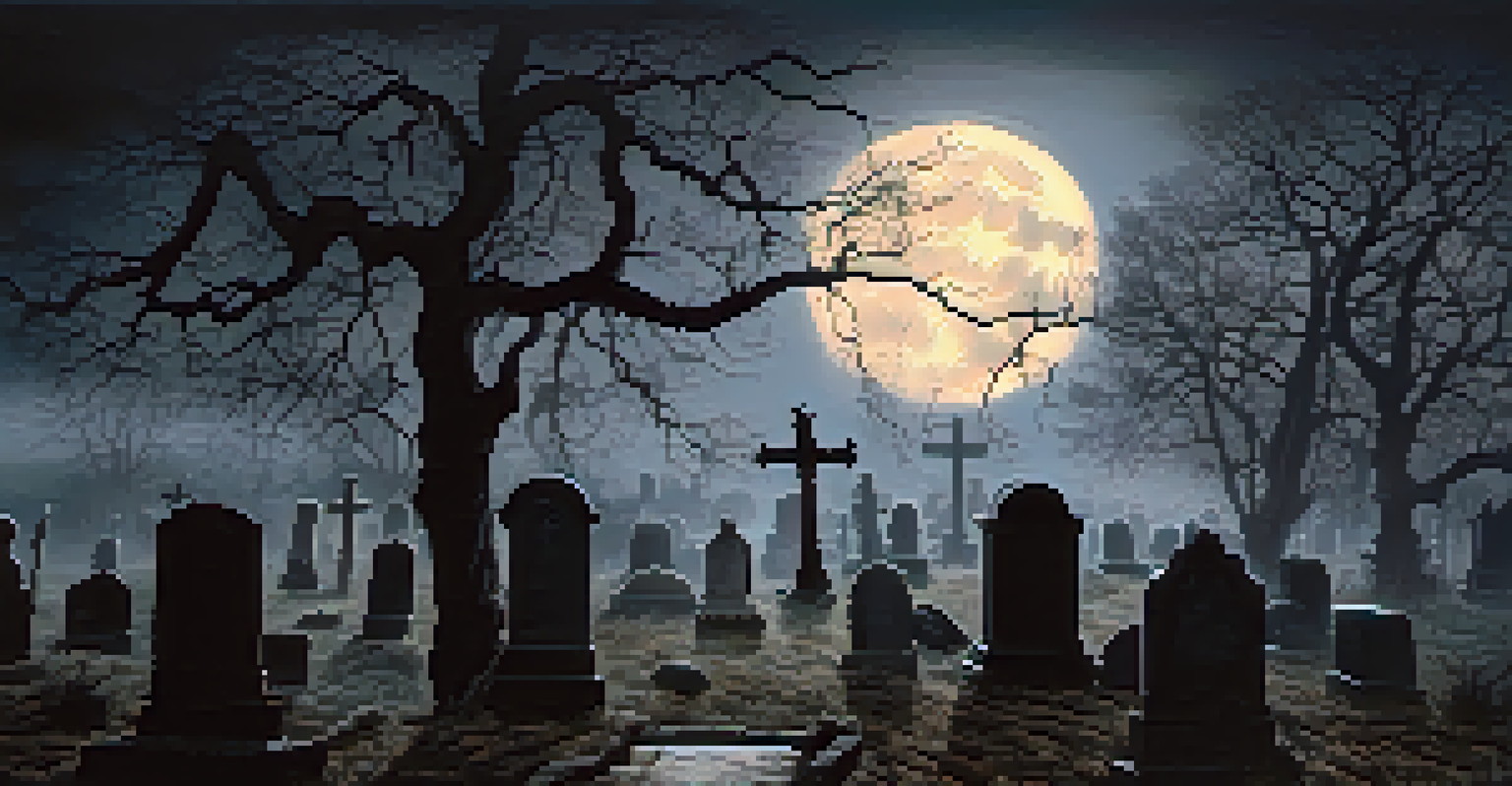Classic Horror Films: Their Enduring Influence on New Genres

The Roots of Classic Horror: An Overview
Classic horror films date back to the early 20th century, establishing a foundation for the genre. Movies like 'Nosferatu' and 'Frankenstein' introduced audiences to chilling narratives that captivated imaginations. These films set the stage for the themes of fear and suspense that would echo through decades of cinema. Their iconic imagery and storytelling techniques have influenced countless filmmakers and genres that followed.
Horror films are a way of confronting the fears that we have in our everyday lives.
The blend of gothic elements with psychological terror created a unique atmosphere that continues to resonate today. For instance, the haunting visuals of 'Psycho' opened doors for psychological thrillers, showing how horror could delve into the human psyche. This evolution illustrates how classic horror not only entertained but also explored deeper fears and societal issues.
Many modern horror films pay homage to these classics, whether through direct references or stylistic choices. The grainy, shadowy aesthetics that defined early horror can still be seen in contemporary films, creating a nostalgic connection for viewers. As a result, classic horror remains a touchstone for filmmakers seeking to evoke similar emotions in their audiences.
Iconic Characters and Their Legacy
Characters like Dracula, Frankenstein's monster, and the Mummy have become cultural icons, transcending their original films. These figures embody universal fears—fear of the unknown, the monstrous, and death itself. Their enduring presence in modern media showcases how classic horror has shaped our understanding of evil and monstrosity.

In today's films, you can see echoes of these characters in new interpretations and adaptations. For example, modern vampire tales like 'Twilight' and 'What We Do in the Shadows' draw from the Dracula legend, yet present it in fresh, relatable ways. This transformation highlights the flexibility of classic horror characters, adapting to fit contemporary narratives and societal norms.
Classic Horror's Lasting Influence
Classic horror films have laid the groundwork for modern storytelling, influencing themes, characters, and cinematic techniques.
Moreover, the complexities of these characters have paved the way for more nuanced representations of villains today. Instead of purely evil figures, we see flawed characters with tragic backstories, inviting audiences to empathize with them. This shift reflects a deeper understanding of morality in storytelling, influenced heavily by the archetypes established in classic horror.
Themes of Fear: From Classic to Contemporary
Classic horror films often explored themes such as isolation, madness, and the supernatural, setting a framework for modern storytelling. These themes resonate deeply with audiences, tapping into primal fears that remain relevant today. The sense of dread and psychological tension in films like 'The Shining' illustrates how these classic motifs continue to inspire filmmakers.
The power of horror is that it allows us to explore the depths of our fears and anxieties in a safe environment.
Modern horror films often revisit these themes but with a contemporary twist. For example, 'Get Out' tackles societal fears around race and identity, demonstrating how horror can reflect current issues. By adapting classic themes to address modern anxieties, filmmakers create a dialogue between the past and present.
Additionally, the exploration of fear has expanded to include new societal fears, such as technology and the future. Movies like 'Black Mirror' utilize horror to critique our relationship with technology—an evolution of the classic fear of the unknown. This generational shift highlights how classic horror's themes remain a vital part of the genre's evolution.
Cinematic Techniques: Borrowing from the Classics
The filmmaking techniques pioneered in classic horror have left a lasting mark on modern cinema. From the use of shadows and lighting to create suspense, to innovative sound design that heightens tension, these elements are foundational in horror. Filmmakers today often draw inspiration from the visual styles of classics like 'The Cabinet of Dr. Caligari' and 'Halloween', creating a sense of unease that captivates audiences.
One significant technique is the effective use of silence and sound, which can evoke a range of emotions. Classic films demonstrated that sometimes less is more; a sudden silence can be more jarring than a loud jump scare. Modern filmmakers like Ari Aster in 'Hereditary' utilize this technique to craft an atmosphere that lingers long after the credits roll.
Cultural Reflections in Horror
Horror films continue to mirror societal fears, addressing contemporary issues while drawing from the anxieties of the past.
Moreover, the art of storytelling in classic horror often involved slow-building tension, a technique that has been revitalized in films like 'The Witch'. This method allows audiences to become deeply invested in characters and their fears, making the eventual scares that much more impactful. By honoring these classic techniques, contemporary horror continues to evolve while respecting its roots.
Cultural Impact: Horror's Reflection of Society
Classic horror films often reflected societal fears of their time, whether it was the fear of nuclear war in 'Godzilla' or the anxieties surrounding mental health in 'Psycho'. These narratives provided a way for audiences to confront their fears in a controlled environment. The societal commentary embedded in these films is a significant reason for their lasting impact.
Today, horror films continue to serve as mirrors to society, addressing pressing issues such as climate change, social justice, and personal identity. For example, 'A Quiet Place' utilizes a post-apocalyptic setting to explore themes of family and survival, paralleling real-world concerns about safety and the future. This ability to adapt to current events keeps the genre relevant.
Moreover, the global reach of horror allows for diverse cultural interpretations of fear. Films from different countries can tackle unique societal issues, enriching the genre’s landscape. This cultural exchange highlights how classic horror has influenced not only Western cinema but also international filmmaking, creating a broader dialogue about fear and humanity.
Genre Blending: Horror Meets Other Genres
The influence of classic horror on other genres cannot be overstated; filmmakers are increasingly blending horror with comedy, drama, and even romance. This genre fusion creates fresh narratives that appeal to wider audiences. For instance, films like 'Shaun of the Dead' cleverly mix humor and horror, demonstrating that fear can be both entertaining and thought-provoking.
Moreover, the rise of horror-comedy has allowed filmmakers to explore serious themes in a more accessible way. By infusing laughter into horror, films can tackle heavy topics without overwhelming the audience. This approach resonates with viewers who appreciate the balance of tension and relief, a technique rooted in the unexpected twists of classic horror.
Genre Blending Enhances Horror
The fusion of horror with other genres, such as comedy and drama, creates innovative narratives that resonate with diverse audiences.
Even dramas and thrillers have incorporated horror elements to heighten emotional stakes. Movies like 'Parasite' blend social commentary with suspenseful storytelling, creating a thrilling experience that keeps audiences on the edge of their seats. This blending of genres showcases how classic horror has paved the way for innovative storytelling across the cinematic landscape.
The Future of Horror: Building on Classic Foundations
As we look to the future of horror, it's clear that classic films will continue to inspire and shape the genre. New filmmakers are revisiting classic tropes while integrating modern sensibilities, ensuring that horror remains fresh and engaging. The blend of nostalgia and innovation creates a dynamic environment for storytelling.
Emerging technologies, such as virtual reality and interactive storytelling, may also redefine how we experience horror. Imagine stepping into a classic horror narrative, fully immersed in the tension and fear. This evolution could provide a new way to explore the themes established by classic films, creating a more personal connection to the story.

Ultimately, the enduring influence of classic horror films guarantees that they will remain a vital part of the cinematic landscape. As new generations of filmmakers and audiences engage with these classics, the cycle of inspiration continues, ensuring that the genre evolves while honoring its roots. This interplay between past and present is what keeps the spirit of horror alive.